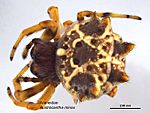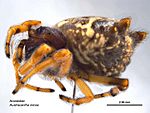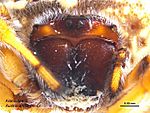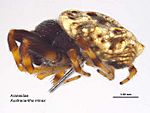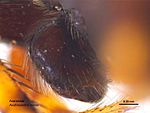Jewel spider facts for kids
Quick facts for kids Jewel spider |
|
|---|---|
 |
|
| Female from Aranda | |
 |
|
| Female from Darlington | |
| Scientific classification | |
| Subspecies | |
The Austracantha minax is a type of spider often called the jewel spider or Christmas spider. It belongs to the orb-weaver family, known for building round, wheel-shaped webs. This spider is only found in Australia.
Jewel spiders are quite small. Female spiders grow to about 12 mm (0.47 in) long, while males are even smaller, around 5 mm (0.20 in). They are easy to spot because their bodies have six unique spikes, or "spines." They are mostly shiny black with bright patterns of white, yellow, or orange. Sometimes, in autumn, they can be completely black.
These spiders often live together in large groups. Their webs can overlap, creating huge, tangled nets. They eat small flying insects that get caught in their webs. Jewel spiders are harmless to people. However, their many webs can be a bit annoying for bushwalkers. You'll see the most jewel spiders during the summer months.
Contents
About the Jewel Spider
Jewel spiders are known by this name because of their bright, jewel-like colors. Sometimes they are called "Australian jewel spiders" to avoid confusion with other spiders that share the name, like the North American jewel spider. In some parts of Australia, they are also called "Christmas spiders." This is because they are most common during the summer (December and January), which is when Christmas happens there. People also call them "six-spined spiders" because of the six spikes on their bodies.
This spider is part of a group called Austracantha. The name Austracantha comes from Latin words meaning "south" and "thorn," referring to where they live and their spiky bodies. The second part of their name, minax, means "jutting out" or "projecting" in Latin, also describing their spines.
The first person to describe this spider was a Swedish spider expert, Tamerlan Thorell, in 1859. He found a female spider in Sydney, Australia. Later, in 1914, a German expert named Friedrich Dahl gave it the name Austracantha. In 1974, a French expert, Michel Emerit, made Austracantha its own main group. There are five different types, or subspecies, of Austracantha minax.
Subspecies
Here are the five types of Austracantha minax:
- Austracantha minax astrigera (described by Ludwig Carl Christian Koch in 1871): Found in mainland Australia. Its body is mostly black on top with yellow patterns underneath. Its spines are thick and curved, with the back spines longer than the side ones. Its chest has a bright orange spot. The name astrigera means "star-bearing."
- Austracantha minax minax (described by Tamerlan Thorell in 1859): Found in mainland Australia and nearby islands like Tasmania. It has yellow to orange colors on the bottom of its body and legs. Its spines are thinner and not very curved. The back spines are almost the same length as the side ones.
- Austracantha minax hermitis (described by Henry Roughton Hogg in 1914): Only found on the Montebello Islands. Its body is pearl grey on top. Its legs, head, and chest are bright orange. The name hermitis means "from Hermite Island."
- Austracantha minax leonhardii (described by Embrik Strand in 1913): Found in central Australia. It has a reddish head and mouthparts. Its legs are brownish-yellow with black rings only on the tips of the second and third last parts. It's named after a German anthropologist, Moritz von Leonhardi.
- Austracantha minax lugubris (described by Ludwig Carl Christian Koch in 1871): Found in mainland Australia. Its legs and body are mostly black with no bright markings. Its spines are thin and point downwards. The name lūgubris means "mournful" or "gloomy."
What Jewel Spiders Look Like
Jewel spiders have a very unique look that makes them easy to identify. Their head and chest area (called the cephalothorax) is black with a shiny blue color. It's covered in tiny white hairs. The top part of their head is shaped like a rectangle. Their chest is brownish-black with a yellow center.
Their fangs are black and have small teeth. Their other mouthparts are black at the bottom and turn brown and bright yellow at the tips. The small leg-like parts near their mouth (called pedipalps) are dark brown.
Jewel spiders have eight eyes, arranged in two rows. The front row curves inward, with the two middle eyes closer to the front. The back row curves outward, with the two middle eyes closer to the back.
Female jewel spiders have legs that are mostly dirty yellow to orange. The last three parts of their legs have black tips. Their first pair of legs is longer than the others. Male jewel spiders have mostly black legs with brownish tips.
The spider's main body part (called the opisthosoma or abdomen) is large and shiny black with bright, colorful patterns. These patterns can be white, yellow, or yellow-orange. The most special thing about them are the three pairs of large spikes sticking out. The front two pairs are close together and form a V-shape. The back pair of spikes is longer and points backward. These spikes are black or brownish-black on top, but yellow-orange or rusty red underneath.
Males and females look different. Females are about twice as big as males, growing to 7 to 12 mm (0.28 to 0.47 in) long. Their head part is squarish. Males are usually only 3 to 5 mm (0.12 to 0.20 in) long. Their bodies are mostly dark reddish-brown. Their spikes are blunt and much shorter than the females'. Male spiders are also easy to tell apart by their larger pedipalps, which they use for mating.
Jewel spiders can have different colors, like white, yellow, or red. Spiders found later in autumn (March to April) can sometimes be completely dark brown or black. Scientists think these color changes might be due to things in their environment, not just their genes. For example, the dark color might help them absorb more heat during colder months.
Where Jewel Spiders Live
Jewel spiders are only found in Australia. You can find them all over the mainland and on nearby islands like Tasmania, Barrow Island (Western Australia), and the Montebello Islands. They are more common in the southern parts of Australia, from southern Queensland and New South Wales, through Victoria and Southern Australia, to Western Australia. While they can be found in the Northern Territory, they are less common there.
How Jewel Spiders Live
Web-building and Aggregations
Jewel spiders are active both day and night. Female spiders build their round, wheel-shaped webs vertically, usually about 1 to 2 m (3.3 to 6.6 ft) off the ground. These webs are about 0.45 to 1 m (1.5 to 3.3 ft) wide. The webs are circular with a very tight spiral pattern. This spiral is woven around twenty to thirty "spokes" that connect to a small ring in the center.
Jewel spiders do something unusual: they make their support threads visible to larger animals. They add small white silk tufts along these threads every 20 mm (0.8 in). It's thought that this helps prevent bigger animals from accidentally walking into and damaging their webs. Even so, webs can sometimes be found damaged. Unlike many other orb-weaver spiders that rebuild their webs daily, jewel spiders' webs are more or less permanent. Females usually rest in the center of their web, facing downwards, instead of hiding nearby. Males are often found on plants close to the web.
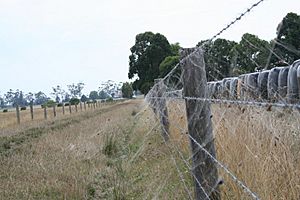
Jewel spiders can live in groups. You can often find them living close to each other in large groups of overlapping webs, sometimes with thirty or more spiders. These groups of webs can completely cover bushes, tree branches, or even fences. Studies suggest that living in groups doesn't necessarily help them catch more food. However, it might help them in other ways. For example, by connecting their webs to others, they don't need to make as much silk. Also, using neighboring webs for support might let them build webs in places they couldn't reach alone, like wide gaps between trees. If a bug escapes one web, it might get caught in a nearby web, which is called a "ricochet effect."
Living in groups also seems to attract more male spiders and protect the females from predators. However, egg sacs in group webs were attacked more often by tiny parasites than egg sacs laid by spiders living alone.
Reproduction and Life Cycle
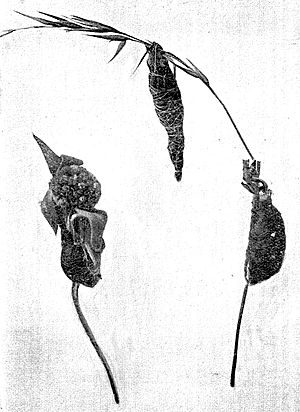
When a male jewel spider finds a female ready to mate, he first attaches a "mating thread" from a nearby plant to the edge of her web. He then goes to the middle of this thread and starts vibrating it with his front two pairs of legs. The female will move towards the vibrations and eventually climb onto the mating thread. Once she's there, the male wraps his legs tightly around her. He then uses his pedipalps to transfer his sperm to the female.
A female jewel spider can mate with several males during one breeding season. If she gets the chance, she will mate with other males even after a successful mating. To prevent other males from fertilizing her eggs, the male who just mated will guard the female. He will chase away other males until the female is no longer interested in mating. This usually happens within an hour to a day after mating. After this, the female herself will aggressively attack any males trying to court her.
Female jewel spiders usually attach their egg sacs to plants or other surfaces near the edges of their webs. These can be grass blades, leaves, or twigs. The egg sacs are about 15 to 35 mm (0.59 to 1.38 in) long and can be round or pointed at both ends. They are reddish-brown to golden-brown, but sometimes they can be bright yellow. They are made from tightly woven silk.
The baby spiders stay inside the egg sacs through the winter until early spring. Female spiders become adults around mid-January, while males mature earlier, in mid-December.
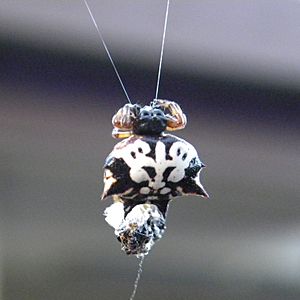
Diet
Jewel spiders are opportunistic predators. This means they eat whatever small flying insects they can catch, like flies and mosquitoes that get tangled in their webs.
Jewel Spiders and Humans
Jewel spiders are considered harmless to humans. Their large web groups can be a bit annoying for people walking through the bush. They are not aggressive and will almost always try to run away from danger. If disturbed, they will slowly climb upside down along their web threads to nearby surfaces. If they can't do that, they will drop to the ground.
Like most spiders, they have venom that they use to catch their prey. However, they rarely bite humans, even when handled. Their bites are only mildly painful to people. Sometimes, a bite might cause temporary redness, swelling, or itching in the area.
In Perth and other parts of Western Australia, when jewel spiders appear in large numbers in gardens, it's often a sign that Christmas is coming. This is also true when the Nuytsia floribunda plant starts to flower.
See also
 In Spanish: Austracantha para niños
In Spanish: Austracantha para niños


